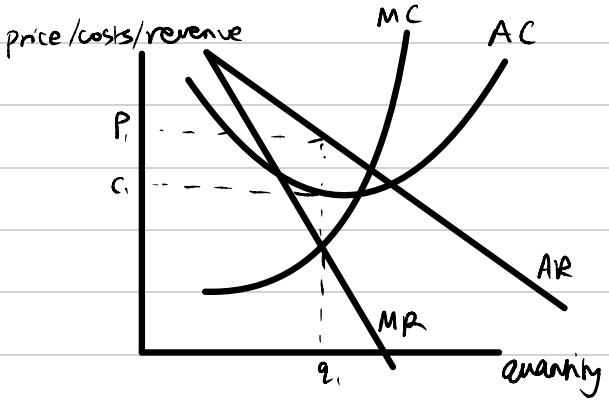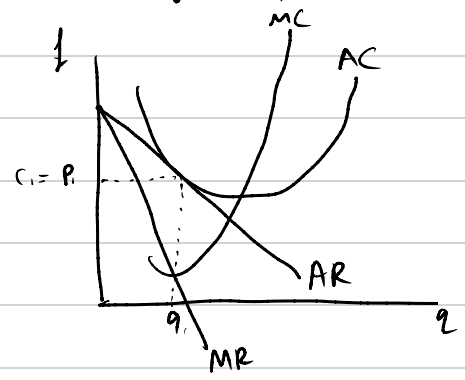Monopolistic Competition | A-Level Economics Model Paragraph (AQA, Edexcel)
A market structure has monopolistic competition if there are low barriers to entry and there is slight product differentiation. In the short run, the firm acts like a monopoly.

The outcome is a price of p1 and a quantity of q1. The firm makes supernormal profit by producing at the quantity where MC = MR as shown by the shaded rectangle.
However, due to the supernormal profit and the low barriers to entry, new firms are able to enter the market. This causes AR to shift to the left because each firm would have less demand for their goods and services.

In the short-run and the long-run, there is no productive efficiency since firms are not producing at the lowest point of the AC curve (MC does not equal AC). Also, there is no allocative efficiency because AR does not equal MC along q1, where firms are operating. Firms are operating at q1 with the aim to maximise profit however there is also no dynamic efficiency. This is because there is no supernormal profit in the long-run so there is not enough profit for firms to re-invest and there may not be any innovation.
However, the main advantage of monopolistic competition is contestability. This is when there are low barriers to entry, allowing for hit and run competition. This is beneficial beccause it means that firms cannot permanently make supernormal profit because new firms are able to enter and compete. Another benefit of contestabilty is that it causes AR to shift to the left and this means firms get closer to the point of allocative efficiency and also closer to the point of productive efficiency. Although they are not actually efficient, they get closer (more efficient than they were in the short run acting as a monopoly).